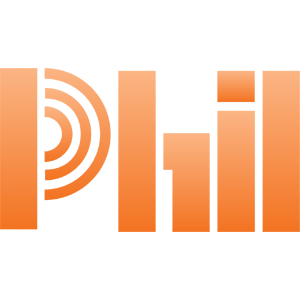
Photoinitiator RC 2184

Specifications
| Item | Index | ||
| Appearance | Color or sightly yellowish liquid | ||
| Density g/cm3 | 1.2±0.1 g/cm3 | ||
| Freezing point | 109-111ºC | ||
| Boiling point(760mmHg)℃ | 467.5±30.0 °C at 760 mmHg | ||
| Flash point ℃ | 109-111ºC | ||
| PURITY | 99% | ||
| Vapor pressure | 0.0±1.2 mmHg at 25°C | ||
Packing & Storage
| Packing | The most common packaging types for epoxies are dual pouch clip systems, dual cartridges, and syringes. | |||||||
| Storage | Store in a cool and ventilated warehouse. Keep away from fire and heat sources. Keep the container sealed. It should be stored separately from the oxidizing agent and should not be mixed. Explosion-proof lighting and ventilation facilities are adopted. It is forbidden to use mechanical equipment and tools that are prone to sparks. The storage area should contain suitable containment materials and leakage emergency treatment equipment. | |||||||
| Shipping | Room temperature in continental US; may vary elsewhere | |||||||
Free Quote
Phil Chemical Co.,Limited now has become the diversified large-scale trans-regional and multi-industry enterprise group, primarily engaged in supplying of raw materials for coatings, supplemented by such chemical products as Arylic acid monomers and acrylic ester together with epoxypropane and other related industry simutaneously. For samples, pricing, or more information, please call us at 0086-25-51192301 or mail to info@ascent-petrochem.com. We will respond to you as soon as possible. |
| Tel: 0086 25 51192301 E-mail: info@ascent-petrochem.com |

General Information
| Common Names | Photoinitiator RC 2184, 1-(1-hydroxycyclohexyl)-1-[4-(2-hydroxyethoxy)phenyl]-1-methanone | |||||||
| Structure |  C15H20O4 C15H20O4 |
|||||||
| CAS No. | 852355-66-9 | Boiling Point (℃) | 467.5±30.0 °C at 760 mmHg | |||||
| Molecular Weight | 264.317 | Melting Point (℃) | 109-111ºC | |||||
| Appearance | Color or sightly yellowish liquid | LogP | 1.45 | |||||
| HS Code | Flash Point (°F) | 174.7±18.1 °C | ||||||
| Solubility | Soluble in alcohol and alkali solution, precipitated in acid is almost insoluble in water. | Index of Refraction | 1.575 | |||||
| Safety Phrases | |||
| RIDADR | |||
| WGK Germany | |||
| Packaging Group | |||
| Hazard Codes | |||
| FIRST AID | |
| Inhalation | Leave the scene to a place with fresh air.Seek medical attention |
| Skin | Take off contaminated clothing and rinse the skin thoroughly with soapy water and clear water. |
| Eyes | Lift the eyelids and rinse with flowing water or saline.Seek medical attention |
| Ingestion | Drink a sufficient amount of warm water to induce vomiting.Seek medical attention. |
At present, the industrial method for preparing α-hydroxyarylketone photoinitiators is: using benzene as raw material, the phenyl ketone intermediate is prepared by Fu’s acylation reaction with acyl chloride catalyzed by lewis acid, and then replaced by halogen (bromine or chlorine), and finally hydrolyzed under the action of concentrated alkali (sodium hydroxide).
Frequently Asked Questions
Q: What is a UV curing initiator?
A: The photocuring system mainly includes photoinitiators, reactive diluents, oligomers, auxiliary agents and other components. Among them, photoinitiators (also known as photosensitizers or photocuring agents) refer to a class of photoinitiators that can be used in the UV (250 ~420nm) or the visible light region (400~800nm) absorbs energy to produce free radicals, cations and other compounds that initiate monomer polymerization, crosslinking and curing. However, the wavelengths absorbed by different photoinitiators are different. The classification of photoinitiators can be mainly divided into two categories: free radical and ionic. Free radicals can be divided into type I and type II; ionic types can be divided into cationic and anionic. The photoinitiator is the starting point of the formulation, and the final use is affected by the performance requirements and the formulation system. There is only the most suitable photoinitiator, not the best photoinitiator.
Q: What are the areas of action of UV curing initiators?
A: The initiator is located in the middle and upper reaches of the industrial chain. The raw materials of the photocuring industry chain are mainly basic chemical materials and special chemicals, etc., and photoinitiators are located in the middle and upper reaches of the industry chain. The mercapto compound series products can be used as photoinitiator raw materials, and are mainly used in the fields of medicine and pesticide manufacturing; photoinitiators are used in many fields such as photoresists and supporting chemicals, UV coatings, UV inks, etc., and the terminal applications span electronic products , home decoration and building materials, medicine and medical treatment, etc.

